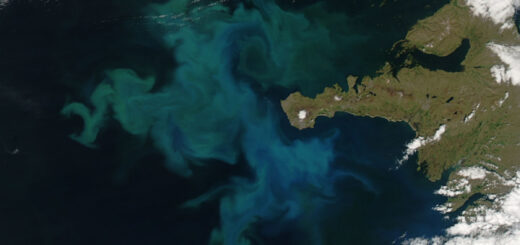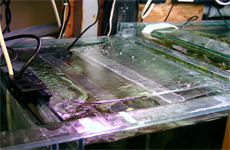Jefferson Project Prepares For Winter On Lake George
0In June 2013, the Jefferson Project launched with the goal of turning Lake George into the world’s smartest lake. The effort, backed by the Fund for Lake George, IBM and Rensselaer Polytechnic Institute, has made serious strides since then.
As planned, Lake George has been instrumented with a slew of monitoring tech since that time, including vertical profilers, stream monitors and current profilers.
“IBM, as part of their Smarter Planet effort to use cutting-edge tech, is using Lake George as a proving ground for their sensors,” said Rick Relyea, scientific lead of the Jefferson Project at RPI, to the Environmental Monitor.

A YSI vertical profiler deployed on Lake George. (Credit: Rensselaer Polytechnic Institute)
But there are still more sensors to be deployed, especially with the upcoming winter season. The vertical profilers, complete with water quality sondes for measuring pH, dissolved oxygen and algae have been pulled. And officials are now shifting efforts to focus on installing stream gauges, as well as some new acoustic doppler current profilers.
“The water is pumped through the sensors (stream gauges), which is contained within a small shack almost like a doghouse,” said Sandra Nierzwicki-Bauer, director of the Darrin Fresh Water Institute at RPI, to the Glen Falls Post-Star. “Those are heated and will remain in all winter.”

Lake George. (Credit: Wikimedia Commons User Sixlocal via Creative Commons 3.0)
The new ADCPs are being deployed on the bottom of the lake and will provide investigators with circulation information on Lake George. Their data will be turned into 3-dimensional models of water movement.
According to the Glen Falls Post-Star, there will likely be more current profilers installed in the future. Project organizers are simply trying to get as many of the devices in the water as possible before harsh winter weather comes.
“This is at least a good start in terms of being able to get information,” said Nierzwicki-Bauer to the Glen Falls Post-Star. “A circulation model for the lake in general is going to be helpful.”













